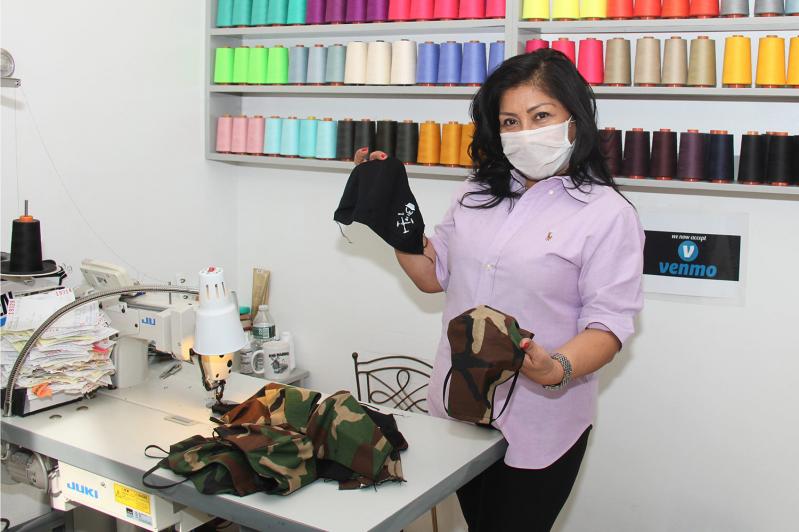With elected officials likening the fight against Covid-19 to a “war,” you might also compare Nancy Nano to Rosie the Riveter, or Urban Reininger to Uncle Sam, or think of local libraries as home-grown victory gardens.
All are examples of modern maker culture, which — by sewing and using 3-D printers to make masks, personal protective equipment, and other safety items -- is coming to the rescue of health care workers and first responders in the nick of time.
From her Noyac tailoring shop, Ms. Nano is leading a group of women who volunteer their time to sew cloth masks for personnel in hospitals, doctors’ offices, schools, hardware stores, and others who don’t have direct contact with Covid-19 patients. Mr. Reininger, who teaches coding at East Hampton High School, is among the tech-savvy East Enders using 3-D printers to make both masks and components for P.P.E. And the Suffolk County library system, with the Montauk, Sag Harbor, and Amagansett libraries contributing resources, has created a “print farm” — rows of 3-D printers — to make the equipment as well.
“I said, what can I do? I have free time. I have fabric. I have a little shop. I said, let me do masks, because I like to help,” said Ms. Nano, who made over 300 masks last week. Each one takes at least 10 minutes.
On Monday she was particularly emotional, having just spoken to friends and family members in Spain and Peru. “I talk to friends who say this is so hard right now,” she said. “Whatever I do, I do by my heart.”
There is also an initiative called Face Mask Aid N.Y.C., which is mobilizing fashion industry volunteers, including East End residents, to make masks as fast as they can sew them. The volunteers are on social media @facemaskaid and have a fund-raiser page online at gf.me/u/xt2dx9.
It’s important to note that homemade masks don’t take the place of full-fledged personal protective equipment for hospitals and clinics, but for the general public, health care experts say, they are more helpful than having no mask at all. “Widespread mask-wearing might be a very effective complement to hand washing, social distancing, and other measures to mitigate the pandemic,” The New York Times reported Tuesday.
Mr. Reininger, whose social media posts have circulated widely, started off using a 3-D printer for masks but has since branched out into other P.P.E. components after realizing there were faster and more efficient ways of helping. Either way, he said, it’s better than doing nothing. There’s even a hashtag for all this: #hackthepandemic. In that context, “hack” is a good term; it means solving a problem rather than creating one.
“We’re all people who are looking for solutions,” said Mr. Reininger, a former Springs E.M.T. with a background in microbiology. “That’s how I kind of look at any problem. . . . People who can figure out solutions are in demand at the moment.”
Schematics and patterns to build P.P.E. are readily available online, but the long wait to receive shipments of raw materials for components is a problem he and other makers have yet to solve.
“Uncle Sam” Reininger’s “I Want You” moment came when he sent out a call for other people to pitch in, however they are able. “Any little bit we can do makes a difference if we all help out,” he said.
Jason Nower of Amagansett felt compelled to join in. Over the last two weeks he has bought not one but two 3-D printers, spools of filament to feed them, and hundreds of industrial-grade filters. He borrowed patterns from makethemask.com, which were developed by a doctor in Billings, Mont., and plans to donate every mask he makes. He also hopes to pool resources and work together with other makers and tech-savvy friends to coordinate the effort.
“At this point, no one around you is in an ideal situation,” said Mr. Nower, whose wife writes for The Star. “So I believe that anything we can do as a community, however small, will make a huge difference.”
That was the theory behind the libraries’ print farm, which consists of dozens of printers purchased by individual libraries and coordinated into one unified effort.
“It’s totally awesome,” said Catherine Creedon, director of the John Jermain Memorial Library in Sag Harbor. “I’m so honored to be part of a profession that is looking outside of its needs right now to find different ways to serve the community.”

